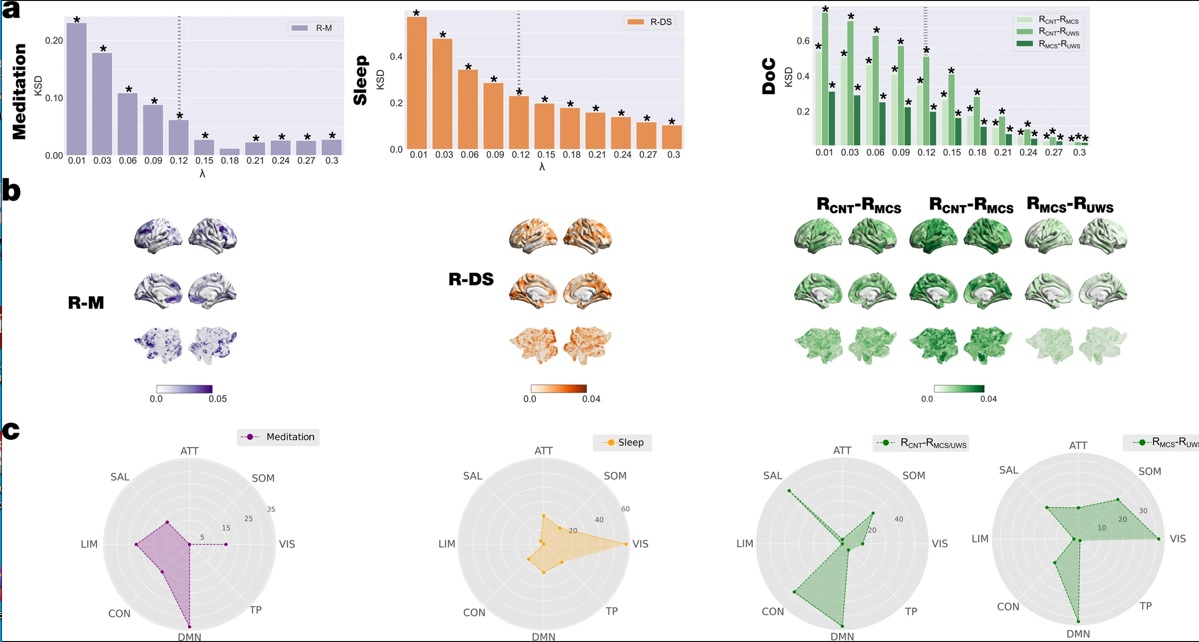Turbulent dynamics in brain activity
By analysing images obtained with functional magnetic resonance imaging (fMRI), UPF researchers have found that the measurements of turbulence in brain dynamics allow distinguishing one state from another far more precisely than using other existing techniques.

Although it accounts for just 2% of a person’s weight, the brain consumes 20% of the body’s total energy. Maintaining brain activity involves a high energy cost for a living being and, in turn, recent research has shown that maintaining the brain’s intrinsic activity in the different states of “supposed rest”, or non-interaction with the exterior, is much more costly than interpreting and responding to certain external stimuli. Hence it is easier for us to spend time in front of the TV (which requires little action) than to read a book or carefully listen to a podcast.
“Describing and differentiating brain states is still a very difficult task to accomplish, and there is still no globally accepted frame of reference regarding which is the best variable to describe them. In this study we report that the characterization of brain activity by means of turbulence measurements allows distinguishing them with maximum precision, as if they were fingerprints of brain states”.
Speaking is professor Gustavo Deco, of the Computational Neuroscience Group of the UPF Center for Brain and Cognition (CBC), an ICREA researcher and co-author of a study published in the journal Communications Biology. Scientists’ general idea is that such turbulence can be used as biomarkers.
The group had already shown in a previous work that when the brain changes state, the different phases of brain activity appeared and disappeared synchronously. In this work they demonstrate that the brain dynamics showed spatiotemporal chaos, that is, that at some moments and in some places turbulence formed and it is a very efficient way of transmitting information. “Turbulence is precisely that, chaos in space and time. And it is at that moment that the greatest transmission of energy occurs. The same happens with turbulence in water, for example, the time when the greatest transmission of energy occurs is when vortices form”, Deco continues.
One example of the importance of turbulence is when we want to properly mix a soup or a stew. The best way for all the ingredients to mix is to perform a chaotic, random movement. If, however, we perform a laminar movement (the spoon always moving in one direction and with the same intensity) mixing will either not take place or will take a long time.
The researchers focused on comparing three circumstances: a state of rest compared to one of meditation; another comparing participants who were sleeping and awake; and a medical case, with the participation of the Paris Brain Institute, and the Coma Science Group in Liège, Belgium, of patients with post-coma consciousness disorders, such as a minimal consciousness state and unresponsive wakefulness syndrome (MCS and UWS) that were contrasted against healthy people or people who had recovered from coma.
In the three groups they found that there were differences in information transfer patterns. They also performed the measurements using computational models of overall brain activity that allow refining the measurements more precisely and also found these differences.
Is this the only way to study brain states? “There are many methods that, by taking the same measurements, can measure interactions in the brain”, Deco continues. “Some look at how the brain is segregated, others calculate the overall correlation of all interactions and select the mean value. They all distinguish between a conscious and an unconscious state, but none does so by directly considering the transmission of information as we do, which allows us to obtain a fingerprint of turbulence and allows us to model it as we wish”.
“All systems can distinguish between a conscious and an unconscious state, but none does so by directly considering the transmission of information as we do, which allows us to obtain a fingerprint of turbulence and allows us to model it as we wish”
Turbulence is present in all brain states. Anira Escrichs and Yonatan Sanz Perl, lead authors of the study and researchers with the same computational neuroscience group, add: “What has allowed us to characterize the different brain states is how information is transferred across spatiotemporal scales. For example, in patients with consciousness disorders, more information is transmitted on short spatial scales and less on long scales, while in sleeping participants the information is transmitted less on all scales”.
The study was supported by the Human Brain Project (HBP), the Spanish Ministry of Science and Innovation, and the Catalan Institute of Research and Advanced Studies (ICREA), among others. Researchers from the Department of Physics of the University of Buenos Aires, Argentina; the August Pi i Sunyer Institute of Biomedical Research (IDIBAPS); the Institute of Neurosciences of the University of Barcelona and the Brain Cognition and Plasticity Unit of the Bellvitge Biomedical Research Institute (IDIBELL) among others also participated.
Work reference:
Escrichs, A., Perl, Y.S., Uribe, C. et al. Unifying turbulent dynamics framework distinguishes different brain states. Commun Biol 5, 638 (2022). https://doi.org/10.1038/s42003-022-03576-6
